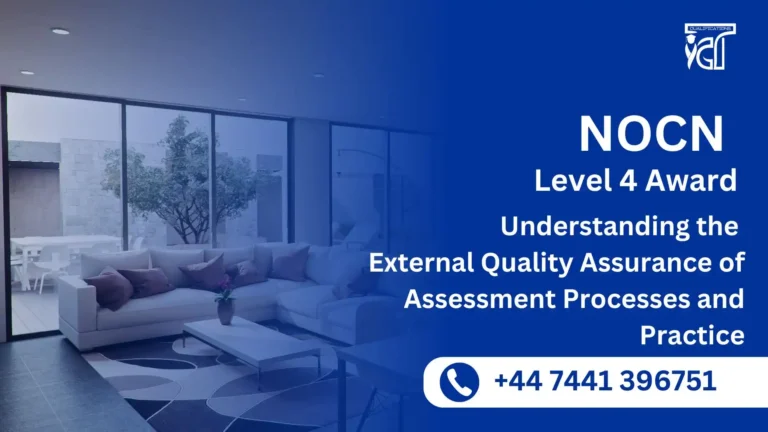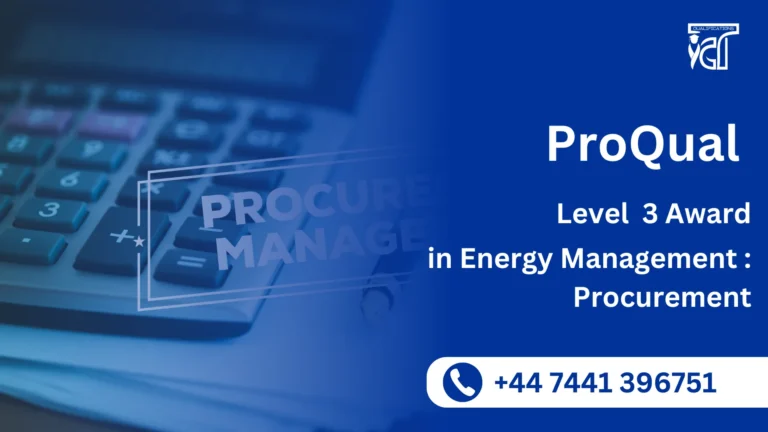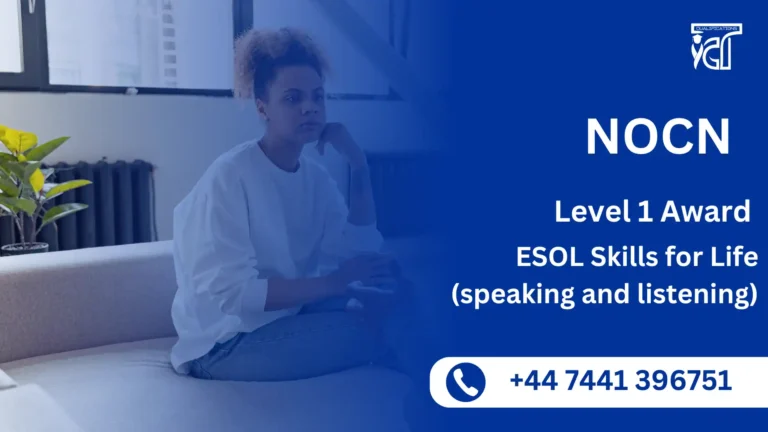In industries such as construction, utilities, petrochemicals, and manufacturing, working in confined spaces poses serious health and safety risks. The LICQual Level 1 Award in Confined Space Entry is a foundational qualification designed to equip learners with the essential knowledge and practical awareness required to work safely in confined spaces. This course is ideal for individuals starting their careers or anyone exposed to potentially hazardous environments where confined space protocols are critical.
The LICQual Level 1 Award in Confined Space Entry provides learners with an understanding of the hazards, risks, and control measures associated with confined spaces. Recognized under international health and safety standards, this course helps organizations comply with regulatory requirements while preparing workers to minimize incidents and respond appropriately to emergencies.
This qualification focuses on entry-level competencies, emphasizing personal safety, communication, atmospheric monitoring, and emergency procedures when entering or working near confined spaces.
Confined space accidents can result in serious injuries or fatalities, often due to a lack of training or proper precautions. With growing emphasis on occupational health and environmental safety, employers are prioritizing personnel who are properly trained in confined space safety protocols. This course ensures workers are not just compliant—but competent and confident in executing safe practices.
The LICQual Level 1 Award in Confined Space Entry is a critical entry-level qualification that enhances safety, awareness, and job readiness for individuals working in potentially hazardous environments. Whether you’re entering the workforce or upgrading your safety credentials, this course lays a solid foundation for success.
LICQual Level 1 Award in Confined Space Entry
Following are the mandatory units of LICQual Level 1 Award in Confined Space Entry:
| Unit Ref# | Unit Title | Credit | GLH |
| LICQ2200091-1 | Introduction to Confined Spaces | 1 | 2 |
| LICQ2200091-2 | Hazard Identification and Risk Assessment | 1 | 2 |
| LICQ2200091-3 | Personal Protective Equipment (PPE) and Tools | 1 | 2 |
| LICQ2200091-4 | Atmospheric Testing and Monitoring | 1 | 2 |
| LICQ2200091-5 | Confined Space Entry Procedures | 1 | 2 |
| LICQ2200091-6 | Emergency Response and Rescue | 1 | 2 |
GLH (Guided Learning Hours) and TQT (Total Qualification Time) are terms commonly used in vocational qualifications to help define the amount of time a learner is expected to spend on their studies.
1. GLH (Guided Learning Hours)
GLH refers to the number of hours a learner spends being directly taught, supervised, or supported during their course. This includes the time spent in activities such as:
- Classroom instruction
- Practical workshops
- One-on-one tutoring or mentoring sessions
- Online learning sessions with tutor support
In other words, GLH represents the time that learners are actively engaged with their instructors or learning activities.
2. TQT (Total Qualification Time)
TQT represents the total amount of time a learner is expected to invest in completing a qualification, including:
- GLH (Guided Learning Hours): Time spent on direct learning, as explained above.
- Self-Directed Learning: This includes time spent on independent study, research, assignment completion, preparation for exams, and any other work the learner does outside of direct teaching hours.
TQT is a broader measure that includes all the time required to achieve the qualification. It helps learners and employers understand the overall commitment required for the qualification.
Key Differences Between GLH and TQT:
- GLH focuses on direct learning with guidance or supervision.
- TQT includes GLH as well as independent study time and other learning-related activities.
Example:
If a qualification has a TQT of 600 hours and a GLH of 250 hours, it means the learner should spend 250 hours in direct learning (classroom, online, or tutor-led sessions) and 350 hours on independent study or research.
By the end of this course, learners will be able to:
1. Introduction to Confined Spaces
- Understand the definition and characteristics of confined spaces and the risks associated with working in such environments.
- Recognize different types of confined spaces in various industries, such as construction, utilities, and manufacturing.
- Understand the legal requirements and health and safety regulations relevant to confined space entry.
2. Hazard Identification and Risk Assessment
- Identify common hazards associated with confined space entry, including physical, chemical, and environmental risks.
- Demonstrate the ability to assess the risks involved in entering a confined space and take appropriate measures to mitigate them.
- Understand the importance of conducting a thorough risk assessment before entering any confined space.
3. Personal Protective Equipment (PPE) and Tools
- Identify the types of personal protective equipment (PPE) required for safe entry into confined spaces, including respiratory protection, helmets, gloves, and harnesses.
- Understand how to correctly use and maintain PPE to ensure maximum safety during confined space operations.
- Learn about the tools and equipment needed for confined space work and how to use them safely.
4. Atmospheric Testing and Monitoring
- Understand the importance of atmospheric testing before entering a confined space to ensure safe working conditions.
- Learn about the types of atmospheric hazards, such as oxygen deficiency and toxic gases, and how to test for them.
- Demonstrate knowledge of the procedures for ongoing atmospheric monitoring during confined space work.
5. Confined Space Entry Procedures
- Learn the step-by-step procedures for safely entering a confined space, including securing the area and ensuring proper ventilation.
- Understand the importance of having a permit-to-work system in place and following all safety protocols before, during, and after entry.
- Demonstrate the correct use of communication methods during confined space operations to ensure continuous monitoring of safety.
6. Emergency Response and Rescue
- Understand the emergency procedures and response protocols in case of an incident or accident within a confined space.
- Learn the role of rescue teams and how to effectively assist in a confined space emergency situation.
- Identify the key actions to take in the event of a fire, gas leak, or medical emergency, and how to evacuate individuals safely from confined spaces.
Benefits of LICQual Level 1 Award in Confined Space Entry
1. Improves Workplace Safety Awareness
- Provides essential knowledge about confined space hazards, helping reduce accidents and promote a safer work environment.
2. Enhances Employability
- Equips learners with a valuable safety credential recognized by employers in industries like construction, utilities, oil & gas, and manufacturing.
3. Supports Legal and Regulatory Compliance
- Ensures that individuals and employers meet national and international safety requirements, reducing the risk of non-compliance penalties.
4. Provides a Strong Foundation for Further Training
- Acts as a prerequisite for higher-level confined space qualifications, such as rescue training or advanced health and safety certifications.
5. Applicable Across Multiple Industries
- Valuable for a wide range of sectors where confined space work is common, offering versatility and broader career opportunities.
6. Fast and Focused Learning
- Designed to be completed efficiently, this award delivers targeted training without unnecessary delays, ideal for quick onboarding.
7. Boosts Confidence in High-Risk Situations
- Prepares workers to recognize potential dangers, follow protocols, and respond appropriately in confined space environments.
8. Internationally Recognized Credential
- The LICQual certification is accepted globally, enhancing career mobility and credibility in international safety roles.
Who Is This Course For?
The LICQual Level 1 Award in Confined Space Entry is ideally suited for:
- Industry Professionals Working in Confined Spaces
Individuals whose roles require them to enter and operate within confined spaces across sectors such as construction, utilities, manufacturing, and facility maintenance. - Entry-Level Workers and Trainees
New employees or apprentices who need a strong foundation in confined space entry procedures, hazard awareness, and safety compliance. - Supervisors and Line Managers
Those overseeing confined space operations who need to understand proper safety measures, emergency protocols, and legal responsibilities to ensure team compliance and reduce risk. - Health and Safety Officers and Advisors
Professionals responsible for developing or implementing safety protocols in hazardous environments, including confined spaces, will find this training critical for maintaining industry standards. - Risk Assessment and Compliance Personnel
Individuals tasked with conducting risk assessments or enforcing health and safety practices within confined spaces will benefit from the course’s focus on hazard identification, PPE, and legal frameworks. - Professionals Seeking Career Development
Anyone aiming to enhance their CV, improve job prospects, or demonstrate competence in workplace safety will gain value from this widely recognized certification.
Entry Requirements
Register Now
Qualification Process
Qualification Process for the LICQual Level 1 Award in Confined Space Entry
- Self-Assessment:
Begin by evaluating your eligibility to ensure you meet the qualification requirements, including work experience, knowledge, and language proficiency. - Registration:
Complete your registration by submitting the required documents, including a scanned copy of a valid ID, and paying the registration fee. - Induction:
An assessor will conduct an induction to confirm your eligibility for the course and explain the evidence requirements. If you do not meet the criteria, your registration will be canceled, and the fee will be refunded. - Assignmnets & Evidence Submission:
Provide all assignmnets and the necessary evidence based on the assessment criteria outlined in the course. If you are unsure of the required evidence, consult with the assessor for guidance on the type and nature of evidence needed. - Feedback and Revision:
The assessor will review your submitted evidence and provide feedback. Evidence that meets the criteria will be marked as “Criteria Met,” while any gaps will be identified. You will be asked to revise and resubmit if needed. - Competence Evidence:
Submit final evidence demonstrating that all learning outcomes have been met. This evidence will be marked as “Criteria Met” by the assessor once it is satisfactory. - Internal Quality Assurance (IQA):
The Internal Quality Assurance Verifier (IQA) will review your evidence to ensure consistency, quality, and compliance with standards. - External Verification:
The IQA will submit your portfolio to LICQual External Quality Assurance Verifiers (EQA) for final confirmation. The EQA may contact you directly to verify the authenticity of your evidence. - Certification:
Upon successful completion of all checks, LICQual will issue your official certificate, confirming that you have attained the LICQual Level 1 Award in Confined Space Entry.







